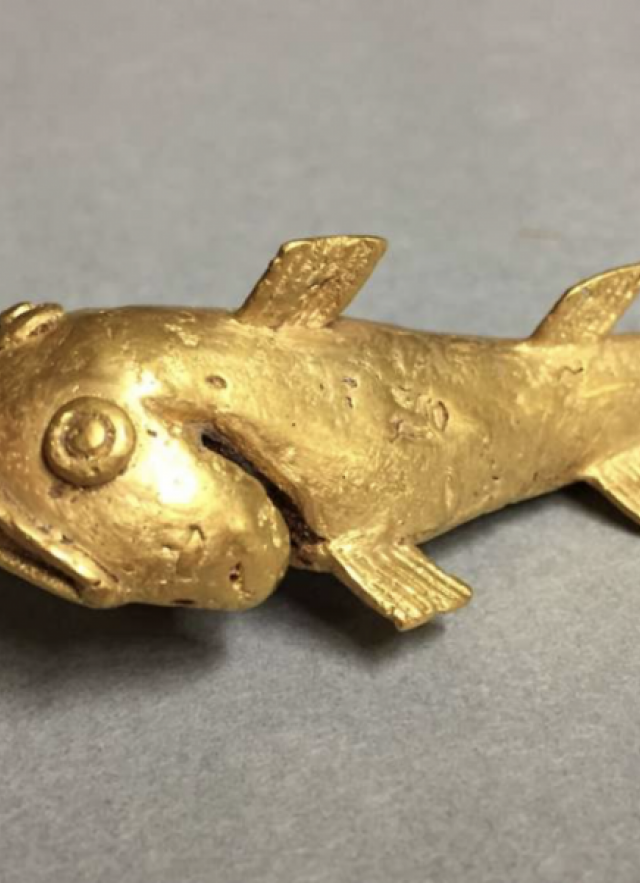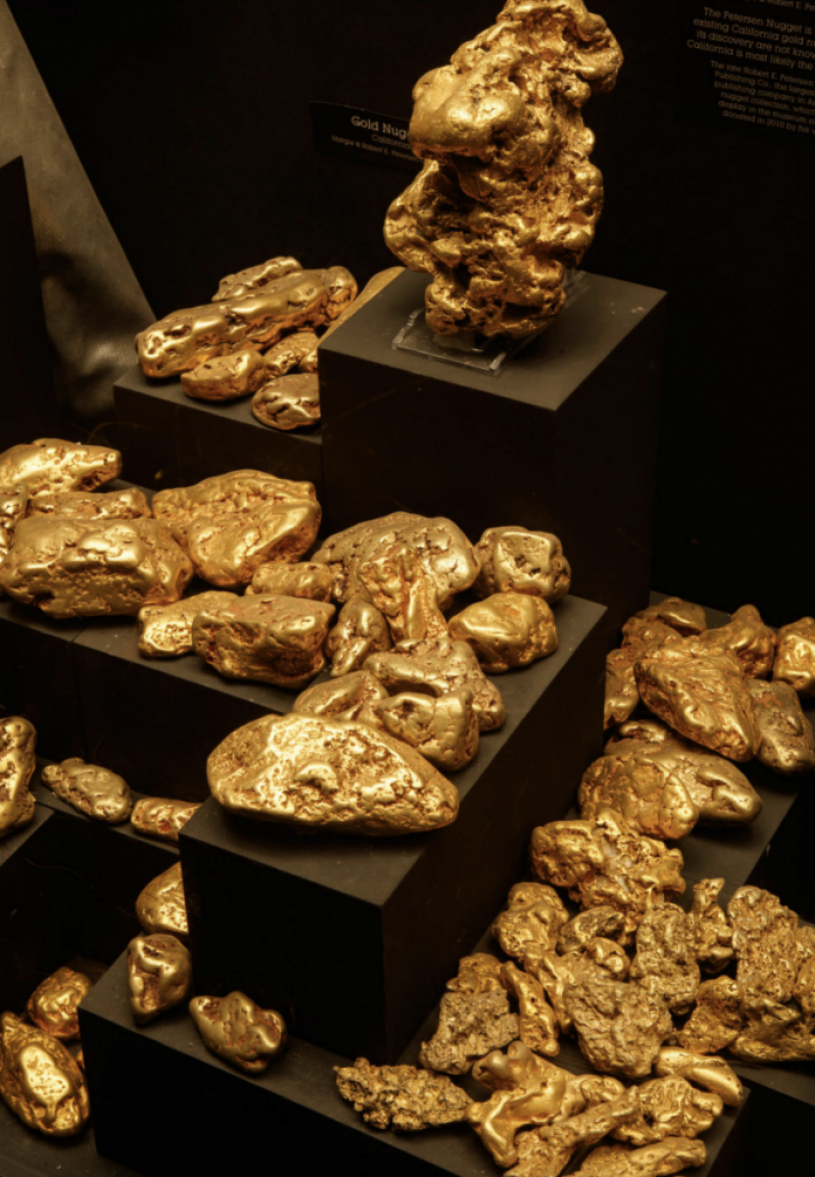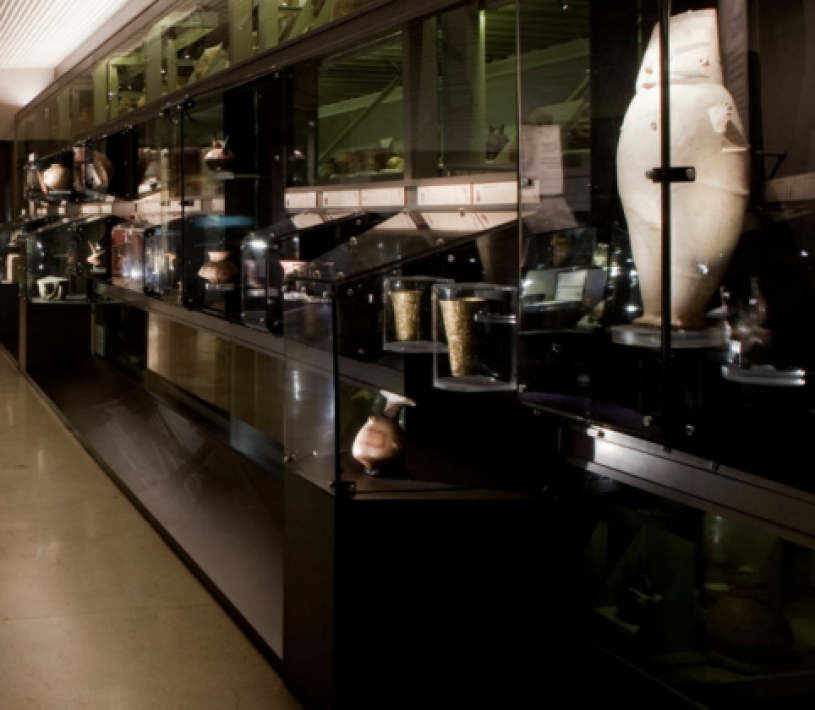Old Catfish Looking for a Date
A golden opportunity to discover the age of an archaeological artifact.

This little golden catfish is full of mystery. And dirt.
When this ornament was added to the NHM Archaeology Collections in 1967 by then-curator Charles Rozaire, there wasn’t a date to go along with it. It came from Venado Beach, an archaeological site in Panama, but it was excavated in the early 20th century, before archaeology was the rigorous discipline it is today. Any information about exactly where it was found within the site was lost forever, and so too any hope of more precisely gauging its age. Art historians can place it within a continuum of cultural works, but that just gives a rough estimate.

We do know it’s from the Gran Coclé culture, but that civilization lasted from 300 B.C.E. to the year 1,500. When in that 1,800-year time span did someone fashion this charismatic little fish? Until now, that has remained a mystery because metal objects can’t be directly dated the same way materials like bones can. Just like some people, gold doesn’t like discussing its age.
But luckily, this metallic artifact did not have a heart of gold, but rather clay. Inside the thin golden structure is tightly packed dark brown dirt, a byproduct of the pre-Columbian metalworking technique called the “lost-wax method.” And most importantly, this sediment contained enough organic material to be used for carbon dating.
“There is some organic material in it, probably little roots or grass or maybe ash,” said Archaeology Collections Manager Chris Coleman.
But carbon dating involves taking a small chunk out of an object. Ordinarily, you try to avoid scratching irreplaceable, ancient artifacts from the Archaeology (or any other) Collections. Museum curators, collections managers, and conservators work tirelessly to maintain the historical records within their respective collections, from textiles to turtles. But in some cases, taking a small piece of an object can tell us more about it. It’s called destructive sampling, and it’s one of the hardest decisions curators and collections managers can make.
“You don’t want to do it unless there is a very good reason, because it can never be undone,” said Coleman.

After mulling over the decision of whether or not to remove a sample of sediment from inside the golden catfish, Coleman decided the benefits outweighed the risks. In collaboration with the Smithsonian Institute, this catfish was sampled for a precise date, along with many other pieces from Venado Beach from other institutions. Other artifacts from the site with similar material turned out not to contain any dateable carbon, so this catfish from the NHM collections became the first directly dated artifact from this important archaeological site.
Assistant Conservator Marina Gibbons performed the painstaking job of removing a small sample to send to a lab for the radiometric analysis. She carefully scraped 0.55 grams — less than the mass of an apple seed — from the core, which contained not only tightly packed sediment, but important embedded information about how the piece was fashioned so long ago.
“The goal was to remove as little of the core as possible, from as stable and unobtrusive a region as possible, to balance the benefit of learning more about the civilization’s chronology against the cost of destroying evidence of the object’s manufacture,” explained Gibbons. “Our goal is to exert as little change on any object as possible, while also working to preserve its scientific and conceptual significance.”
Worried that the she would have to press down hard to liberate a sample from the object, Gibbons held the catfish in one hand, a scalpel in the other, and very gently brought the blade in contact with the sediment.
“The core actually turned out to be very crumbly,” explained Gibbons. “I really just barely scraped the surface, and a fair amount of material came out right away.”
The results are in. The sediment has been dated to 1,570 years before present, give or take 30 years.
The “present” in “before present” when it comes to radiocarbon dating is slightly misleading, because it doesn’t refer to the current year, but rather 1950, as it was around this time that the calibration curves for radiocarbon dating were established. So this little catfish was probably fashioned around the year 380.
But getting a date from the material in the middle is tricky. The date tells us the age of some organic material in the sediment, which is not quite the same as the age of the object itself.
“It does seem a bit older than our estimates for the time span of Venado Beach,” said Warwick Bray, Professor Emeritus at the Institute of Archaeology, University College London. “There is always the possibility that it was an heirloom piece, and was made well before it got into a tomb at Venado Beach.”

What species of Panamanian catfish the artisan was emulating is another mystery. “When fish are the models for jewelry or sculpture, we can often figure out what kind of fish is being depicted,” said Chris Thacker, Curator of Ichthyology. “This flattened fish with barbels and two widely spaced fins on the back is probably a catfish in the family Ariidae.”
Richard Cooke, Senior Staff Scientist at the Smithsonian Tropical Research Institute, Panamá is familiar with a local catfish that the artist likely would have encountered so many years ago. “The shape and size of the head with the curlicue barbels recalls the common species Notarius kessleri which is, and was, an important food fish in the area.”
Aaron Celestian, Curator of Mineral Sciences, took a look at the golden catfish as well, noting what further (non-destructive!) analysis the fish could undergo. “We could do neutron scattering to get a chemical image of the entire fish and to see how big the crystals are. And we have a microbeam XRF (X-ray fluorescence microscope), so we could measure if the fins have different compositions from the whiskers, which would tell us if they were from different vat batches.”
But for today, a date is plenty.